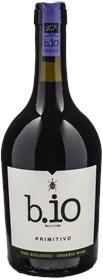Fermentation is a key process in wine production and is responsible for converting the sugars present in grapes into alcohol, while also contributing to the development of secondary aromas that will be perceived in the final product.
For this process to occur properly, grapes must be harvested at the right degree of ripeness when sugars are present in adequate quantities and acids are balanced. After harvesting, grapes are separated from the stems and then crushed to obtain the must.
At this stage, we can say that the actual alcoholic fermentation of wine begins.
Contents:
- The Yeasts Involved in Fermentation
- How Long Does Alcoholic Fermentation Last?
- Differences Between White and Red Wines
- When Does Fermentation Conclude?
The Yeasts Involved in Fermentation
Grapes harvested from the vineyard already carry a natural population of yeasts deposited on their skins. These are yeasts that feed on sugars developed during the ripening of the clusters and, once crushed and reduced to must, will be a part of the yeasts responsible for fermentation.

These yeasts, called indigenous or native, are difficult to manage because they are constantly evolving and reproducing. To overcome the restlessness of these microorganisms that could disrupt the winemaking process, enology has selected “domesticated” yeasts, that is, cultures over which greater control can be maintained. This includes the family of saccharomyces, particularly Saccharomyces cerevisiae for the fermentation of common musts and Saccharomyces bayanus for the fermentation of musts with high sugar content or for the production of metodo classico sparkling wines.
The wine fermentation process involves yeasts, which, by feeding on the large amount of sugars present in the must, produce ethyl alcohol (50% of the substances produced from sugar degradation) and carbon dioxide.
How Long Does Alcoholic Fermentation Last?
Alcoholic fermentation can last from 5 to 15 days, depending on the type of must and wine desired. The process, although natural, must still be monitored because if it occurs too quickly, it would produce too much carbon dioxide, dispersing the aromas.
Similarly, the temperature of the environment inside the tanks where the process takes place must fall within a certain range: it should not drop below 15°C as fermentation would not occur at all; nor should it be too hot because the yeasts would die.

Differences Between White and Red Wines
The vinification of white wines occurs with musts devoid of skins and cleared of solid parts. During alcoholic fermentation, the goal is to develop aromatic complexity, and for this to happen, the temperature cannot exceed 20°C. Stainless steel tanks used in this case have thermometers and a jacket covering the outer layer to circulate cooling water. An alternative technique to steel is fermentation in barriques, small wooden barrels, followed by lees aging.
For red wines, fermentation is fundamental for color and body development. With a higher temperature, but never exceeding 30°C, more structured wines are obtained, while lighter wines can ferment even at lower temperatures.
When Does Wine Fermentation End?
To understand when fermentation concludes, one must refer to the density of the obtained liquid. The presence of sugars makes the must denser, while low density corresponds to adequate alcohol and carbon dioxide development.
At this point, even visually, it will be noticed that the boiling due to fermentation will have ceased. It will be possible to proceed with racking, i.e., the separation of the wine from yeast residues and solid matter.
The timing may vary depending on the wine: light reds can be racked before fermentation concludes (5 days). Premium wines are racked at the end of fermentation and, finally robust wines may remain a few more days as they will then undergo a long aging period.














